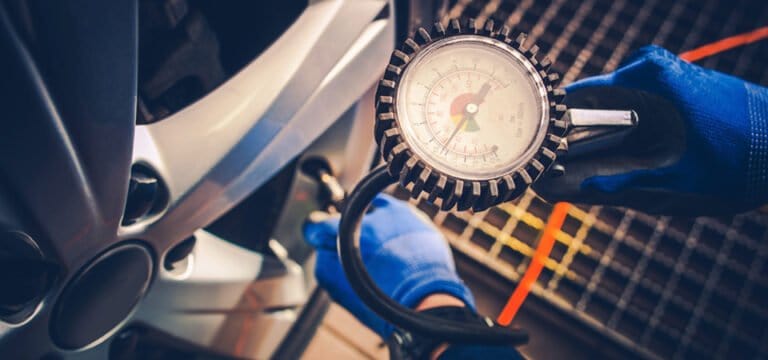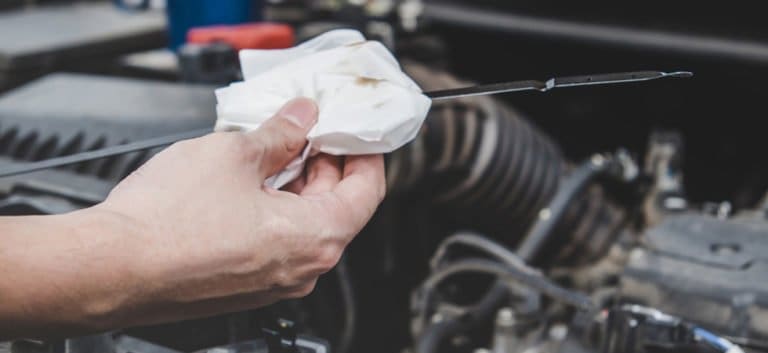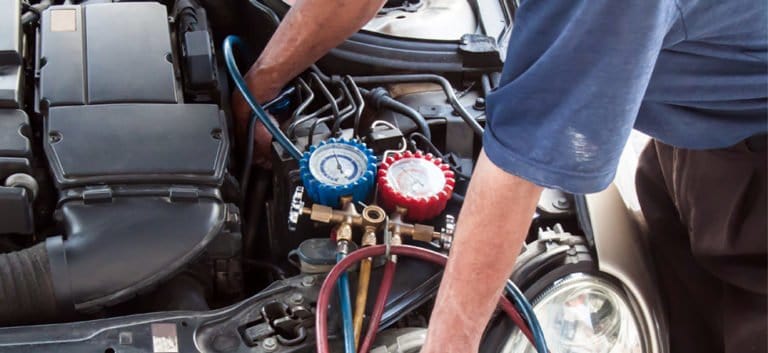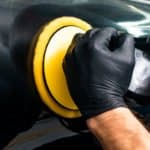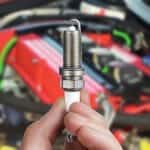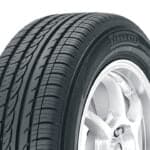Affiliate Disclosure: Some of the links in this post are affiliate links. As an Amazon Associate, we earn from qualifying purchases. Read more in our affiliate policy.
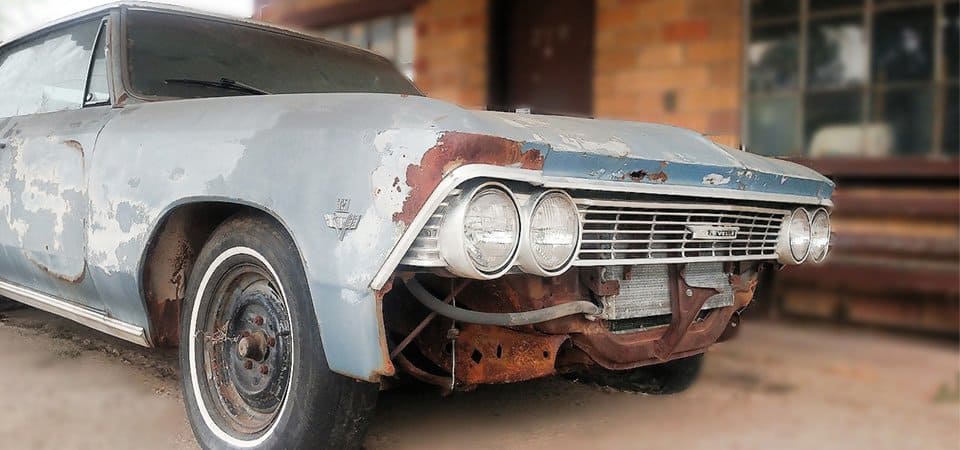
How to Prevent Rust on Cars – Actionable Corrosion Protection Tips
Welcome, we’re glad you stopped by. Today’s topic we’re going to discuss is how to prevent rust on cars.
We think pretty much everyone knows that cars are predominantly made of metal. As such, they are vulnerable to corrosion. Given the right (or wrong) combination of the conditions that we expose our vehicle to and the kind of care that we give it, rust can form anywhere on our car.
Corrosion is not only unsightly, but it is also a threat to your vehicle’s durability and longevity. It will also affect your car’s value and performance over time.
It is therefore essential to learn how to prevent corrosion on cars. Here at garagechief.com we will take a look at proactive, preventive, and reactive measures that you can take to arrest corrosion.
How To Prevent Rust On Cars
Let’s start from the easiest thing you can do – visual inspection of your four wheels:
Routinely Inspect Your Car for Signs of Rust
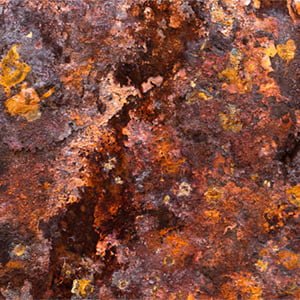
Failing to check these areas could give rust time to develop. By the time it is discovered, it may a little too late.
You may find the floor soaked after driving over a puddle and only then realize that rust has already made a good-sized whole.
Keep an eye out for anything as tiny as a nick or scratch because those could be potential starting corrosion points.
-
Wheel wells
Tire manufacturers usually recommend that you rotate your tires every 6,000 miles. While you are in the business of removing your wheel to rotate it to another wheel well, it would be a good opportunity to check for rust in the well.
People often overlook this part because it is usually dirty and it is hard to see what is going on in there.
Use a flashlight to check for rust. If it is too dirty, hose it down and check again. -
Bumpers
Removing your wheels to rotate them will also give you a better view of the bumpers so take that chance to check the bumpers out as well.
-
Areas where body components touch
Rust will most likely form in areas where a metal part comes in contact with another metal part. That is most especially true if they rub against each other.
This could wear protection from the paint away and it would be more conducive for rust to develop.
Examples of these areas are the door frame, around the trunk, and the area where the hood meets the fenders. Open the hood, trunk, and the doors to look for rust. If the paint is bubbling, rust may be forming underneath the bubbled up paint.
-
Drain holes
Since water is one of the ingredients to make rust, we need to prevent it from accumulating.
Modern cars come with drain holes at the bottom of doors to make removal of rainwater easy. If you have a sunroof, you may also want to take a look at the sunroof drain hose. Check for blockage on these, clear them, and drain the hoses.
-
Bottom of the vehicle
The bottom of the car takes the most beating and is, therefore, more prone to rust. It can be especially hard during the winter when it frequently comes in contact with ice, salt, and other substances that encourage the formation of rust.
Next time you go for an oil change, check the underside of your vehicle for signs of rust.
The Simplest Rust Prevention Tip: Wash Your Car Regularly
Dust, dirt, and debris can wear your car’s paint over time, slowly stripping your car of its protection as they rub against it.
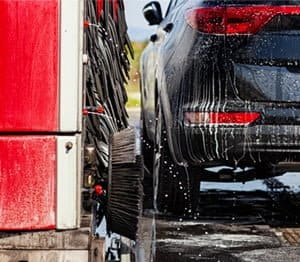
If you allow them to sit for an extended period of time it could slowly erode through to the protective layer.
If you live by the beach or the ocean or in an area that experiences winter, you have to wash your car more often. The presence of salt will stimulate the formation of rust.
Therefore, if you ask how to prevent rust on cars, we’ll tell you that one of the simplest things you can do is to give your car a good wash, especially at the start of autumn and spring.
Before roads are treated for the winter, your car should already have a good cleaning so that it’ll be ready for rust-proofing which we will talk about later.
Cars are more susceptible to rusting during spring. The temperature, moisture in the air, and the salt on the melting snow make a perfect brew for rust formation.
During winter, it’s a good measure to wash your car every 10-20 days. It’s also recommended to wash your car after rain and snowfalls, and every time the temperature goes above zero degrees.
You may use baking soda with an automotive soap to fight the effects of road salt on your car. Add a tablespoon of baking soda to your soap and water mixture and use this to clean the undercarriage and wheel wells of your car.
Rinse your car thoroughly too as dried soap can dull your car paint’s appearance. Dry your car thoroughly after to discourage rust.
Protect the Inside of the Car
The salt and moisture that you take with you inside the car will find its way to the carpets and the floor.
Get rubber floor mats and vacuum regularly to protect your floors from things and substances that could seep and eat its way through to the steel floor below.
Apply Anti-Corrosion Products
Today’s cars have an advantage over corrosion compared to cars from earlier decades but they are certainly not resistant to rust.
You can consider investing in the best rust prevention spray for cars to inhibit rust.
Before applying one, see to it that your car has been thoroughly washed and dried. The spray is usually an oil-based liquid that works its way into the crevices.
If your vehicle is not clean enough, you would risk trapping debris which could potentially cause corrosion sooner or later.
Wax Your Vehicle
It is recommended to wax your car at least twice a year. Aside from giving it an extra shine, it also shields the paint from damage and fading. The wax will repel water and will add another layer of protection.
Rust Proofing Car – Other Alternatives To Consider
-
Ceramic Coating
It is considered a premium wax alternative. It makes a permanent or semi-permanent bond with your car’s paint so it will not break down, wash away, or need repeated application after a few months.
It offers protection against UV damage and oxidation to prevent dull appearing paint.Because it produces a chemically resistant surface, it can prevent contaminants from bonding to your car’s protective paint. The car will, therefore, be less susceptible to stains and scratches.
The ceramic coating is also water repellant. Grime and mud will find it harder sticking to your car’s surface. All in all, this is a smart solution for preventing rust on cars. -
Paint Protection Film (PPF)
Another way to prevent corrosion on a car is to use the paint protection film. It was originally created for military applications and is made of thermoplastic urethane film. It’s meant to prevent scuffs, rock chips, and other types of damages that can ruin the car’s paint and body.
The film is almost invisible and can be molded to fit the surface of any car. The surface fitted with PPF will have its paint sealed and will have a glossy and shiny appearance.
It boasts of being self-healing. By having a tough defensive front, it can withstand scratches.
As for the price, it can be relatively expensive.
Tackle Corrosion as Soon as See it to Stop Rust on Car From Spreading Further
Stop rust as soon as you spot it before it takes a life of its own. You can choose to get one of those rust repair kits but they are only effective on minor rust. What they do is remove the rust and prep the surface for replacement primer application.
If the rust is more serious, you can use sandpaper. Begin with coarse-grit sandpaper to chip off the rust and then finish off with fine-grit sandpaper to smoothen the surface. Be careful not to scrape off the paint surrounding the affected area.
Next, apply a rust arrestor on the affected area with an application brush. You can get a rust arrestor at auto parts stores.
Once the rust arrestor has dried, apply automotive primer over the dried rust arrestor thinly but completely covering the area that you can’t see any metal showing through. Allow the primer to dry.
To find the correct shade of the automotive touch-up paint, locate your car’s VIN number and/or paint code near the VIN number. It is on the placard inside the driver’s door on most vehicles. Present this information to your auto parts store or dealership so that they can give you the matching touch-up paint.
When applying the paint, just dab it onto the dried primer. If you do long strokes, it may have lines on it.
How to Prevent Rust on Cars – Conclusion
Our cars will probably not stay showroom sparkly forever. But that does not mean that we have to let our vehicle’s condition succumb to the forces of nature sooner and have it quickly descend to its quietus.
Cars will usually last for 8-15 years. That lifespan can be extended if proper care and maintenance are exercised.
The time and money that you spend on prevention is a dwarf compared to what you will need to shell out if rust decides to go for a hostile takeover due to a lack of necessary care.
Make it a habit to inspect and wash your car on a regular basis. Avoid driving your vehicle in harsh conditions that could encourage rust to develop; but if you have to, make sure that it is protected with the necessary anti-corrosion products. Stop rust in its tracks as soon as you spot it.
Knowing how to prevent rust on cars not only adds value to your pocket but also quality to your ride.
Disclaimers
All product names, logos, and brands are property of their respective owners. All company, product and service names used in this website are for identification purposes only. Use of these names, logos, and brands does not imply endorsement.
It is our policy to make every effort to respect the copyrights of outside parties. If you believe that your copyright has been misused, please provide us with a message stating your position and we will endeavor to correct any misuse immediately.
Some of the links in this post are affiliate links. As an Amazon Associate, we earn from qualifying purchases. This means if you click on the link and purchase the item, we may receive an affiliate commission, at no extra cost to you. This helps us keep this website alive. Read more in our affiliate policy.
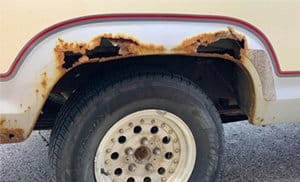 Rust will most likely form in areas where a metal part comes in contact with another metal part. That is most especially true if they rub against each other.
Rust will most likely form in areas where a metal part comes in contact with another metal part. That is most especially true if they rub against each other.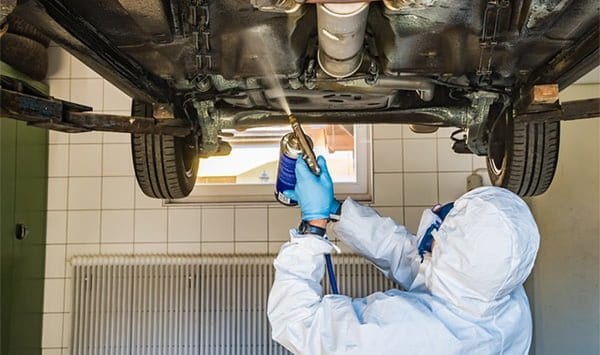
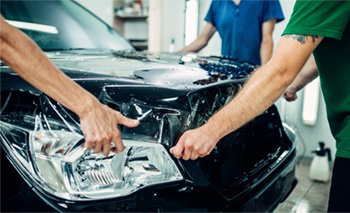 Another way to prevent corrosion on a car is to use the paint protection film. It was originally created for military applications and is made of thermoplastic urethane film. It’s meant to prevent scuffs, rock chips, and other types of damages that can ruin the car’s paint and body.
Another way to prevent corrosion on a car is to use the paint protection film. It was originally created for military applications and is made of thermoplastic urethane film. It’s meant to prevent scuffs, rock chips, and other types of damages that can ruin the car’s paint and body.